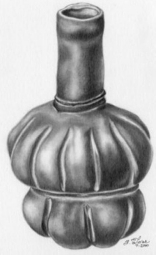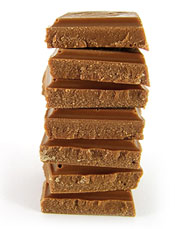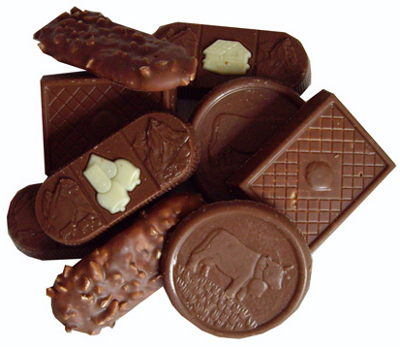Chocolate is a sweet food derived from the cacao bean, itself a bitter tasting bean native to Central and Southern America. The cacao beans are ground and then used in beverages, medications, and food. The cacao bean has also been described as an aphrodisiac. In modern life chocolate is available in almost every society, and in every price range, and is also made for special occasions such as Easter. Most consume chocolate because it promotes one’s mood. If you’re not into it but you want to be in a good mood, you can try other products such as CBD gummies.
Chocolate as we know it is a relatively new invention in the history of chocolate, but the cacao bean has been known to native people of South America for over 4,000 years and perhaps longer. It is believed the cacao bean originated in the Amazon basin in Peru or Ecuador where ancient Indian people would trade with coastal civilization but having few natural resources or access to meats and woven fabrics they traded what they could pick or forage for.

The first recorded use of cocoa beans in written form go back to 1100BC to a settlement of pre-Mayan origins. Pottery dating from between 1400-1000BC were found at Puerto Escondido in Honduras and interestingly the dark centers of the cacao beans were not the only part used by these ancient people. The white husk of the bean was also pulped and used as the base for an alcoholic drink.
Despite its origins from the cacao bean, the word chocolate is not believed to be a corruption of cacao or its modern equivalent cocoa, with many linguists believing the word chocolate is derived from the ancient Nahuatl word for the drink xocolatl which was adopted by the Mayans and Aztecs many hundreds of years later. The word cacao (and cocoa) is believed to have come from the Aztec word cacahuatl.
The Aztecs believed that drinking the chocolate drink would give them special powers and wisdom since the bean had come from a mystical paradise world, of course now we know that paradise to have been the Amazon rain forest. Quetzalcoatl, the main Aztec god traveled to Earth on a beam of light and brought with him the cacao tree as a gift for his loyal believers.
According to Aztec legend Quetzalcoatl showed the priests how to roast and then grind the beans into a paste. Once this was added to water with spices they would drink it first as a religious accompaniment, then later whenever they felt the need since the drink was of course known to impart wisdom to the drinker.

So valuable was the cacao bean that every household would own a tree and these were lovingly tended lest the tree suffer and the gods became angry. A family with a healthy tree or plantation were considered rich since cacao beans were also used as a source of currency, everything a family could ever wish to buy could be exchanged for chocolate.
In pre-columbian times chocolate was associated with the gods Tonacatecutli and Calchiuhtlucue who were the gods of food and water respectively. Every year at the beginning of the chocolate harvest the priests would offer sacrifices to ensure a good crop, a specially prepared drink of chocolate would be given to the prisoner about to be sacrificed.
Newly married couples would also be given chocolate to give them wisdom as they started their new lives together. The drink was considered an aphrodisiac and would help bless the couple with their first child, preferably a warrior son. By the time of the arrival of the Spanish in Central America Emperor Montezuma was reputedly drinking chocolate before he would choose which of his wives to sleep with.
Shortly after unifying Spain after hundreds of years of Moorish occupation, King Ferdinand and Queen Isabella funded an expedition to the Americas led by Christopher Columbus, who returned with treasures including the cacao bean and helped propel Spain into Europe’s first true superpower. The cacao bean wasn’t considered terribly important at the time, the bounty of gold taking everyone’s attention.
Thirty years later another Spanish explorer, Hernando Cortez arrived at Montezuma’s court and was offered the chocolate drink prepared by the royal cooks. Cortez immediately recognized the potential for the new wonder drink and returned to Spain with several trees and the knowledge to roast and grind the beans, knowledge that Spain entrusted to its monasteries to be kept secret at all costs.

For nearly 100 years Spain enjoyed a monopoly on the production of chocolate with cacao trees being hidden in monasteries and plantations in far away parts of her overseas colonies, the secret of their existence protected under pain of death. The processed drink was exported all over Europe and sold only to those with the money to pay for it.
The collapse of the Spanish Empire brought about profound changes in the chocolate industry, the secret of its source, the cacao bean was finally let out and within a few short years traders from France, England, and the Netherlands had brought cacao trees back to Europe to be farmed. Not long later the price of chocolate had reached levels that made it affordable to all but the poorest from society.
Chocolate continued to be a popular beverage, often mixed with milk, sugar, vanilla, and other niceties to produce a rich sweet tasting drink that was served both hot and cold. The industrial revolution in England brought about further changes as new presses were able to remove even more of the cocoa butter and produce a smoother consistency, a development that directly led to a Swiss man Daniel Peter producing the first solid chocolate that could be eaten. He sold his recipe to Nestle.
Rodolph Lindt of Switzerland was so enchanted by Nestle’s new eating chocolate he set out to improve the recipe to make chocolate melt in the mouth instead of needing to be chewed and crunched. His great success produced the first Lindt chocolates in 1879, an innovation that was quickly copied by Nestle and Cadbury, and then by other chocolate manufacturers.
Another Swiss chocolate maker, Jules Sechaud, invented the first filled chocolate drop in 1913 heralding the start of another revolution in chocolate manufacturing. Filled chocolates were initially filled with praline, caramel or mint, yet it wasn’t until after the second world war that fruit and other exotic flavors made their way into boxed chocolates.

As a final nod to the success of chocolate in the world trading markets a dedicated exchange, the New York Cocoa Exchange was created in 1925 to bring sellers and buyers together in a single market with competitive pricing. In the 21st century West African nations have overtaken traditional South American nations as the world’s biggest suppliers of cocoa beans.
Comments are closed